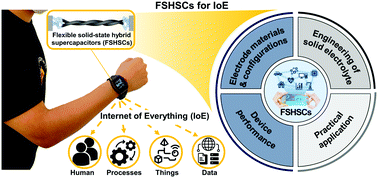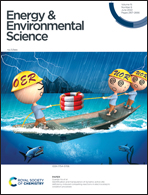Flexible solid-state hybrid supercapacitors for the internet of everything (IoE)
Abstract
In this era of fast-moving technology, the new paradigm of the Internet of Everything (IoE)—the intelligent connection between people, processes, data, and things—will be accompanied by dramatic changes in modern life that will go beyond the familiar Internet of Things (IoT). The IoE may alter how we live, work, and interact with many untethered things in a wide range of applications, including personal devices, home appliances, and industry. A key requirement for its successful widespread adoption is secure performance in various applications of data and power management. In this regard, supercapacitors play an important role as a real-time backup power supply and micro-power source for the embedded electronics. In particular, they are ideal for the next-generation of portable and wearable electronics that require lightweight, robust, flexible, reliable, and environmentally benign electrochemical energy storage (EES) devices. Hybrid supercapacitors (HSCs) have emerged as an important class of EES device. They have advantages such as high-power density, high specific capacity, long-term cycling stability, and safety. For the portable and flexible IoE smart devices, flexible solid-state hybrid supercapacitors (FSHSCs) provide an attractive solution to overcome the poor readiness in terms of immediate power supply and auxiliary energy source. However, there are still a few major challenges including suitable electrode materials, electrolytes, and the configuration design to achieve a satisfactory energy density, bendability, twistability, mechanical durability, and safety that need to be met before FSHSCs can be fully deployed. In this review paper, after briefly describing the development history of supercapacitors, we focus on recent research progress in FSHSCs for portable and/or wearable devices, classified according to the structures (yarn-, sheet-, and micro-structured types). This is followed by a discussion of the micro-type FSHSCs for miniaturized interdigitation, categorized on the basis of the fabrication methods, including masking, inkjet screening, and 3D ink printing. The article concludes with a discussion of recent trends in industry of adopting FSHSCs for IoE applications, several examples of commercialized and demonstrated products, and a detailed discussion of the desirable features and challenges encountered in their deployment in different sectors of the IoE infrastructure. We hope that this will spur new ideas and insights for research into the next generation of IoE devices.

- This article is part of the themed collection: Energy and Environmental Science Recent Review Articles


 Please wait while we load your content...
Please wait while we load your content...